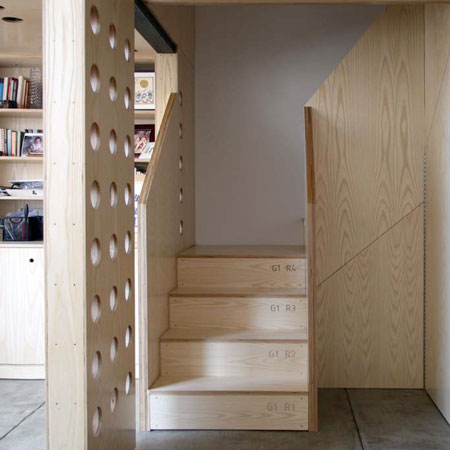
URBIA Furniture System by OBRA Architects
New York practice OBRA Architects have sent images of their URBIA Furniture System installed in two New York apartments.
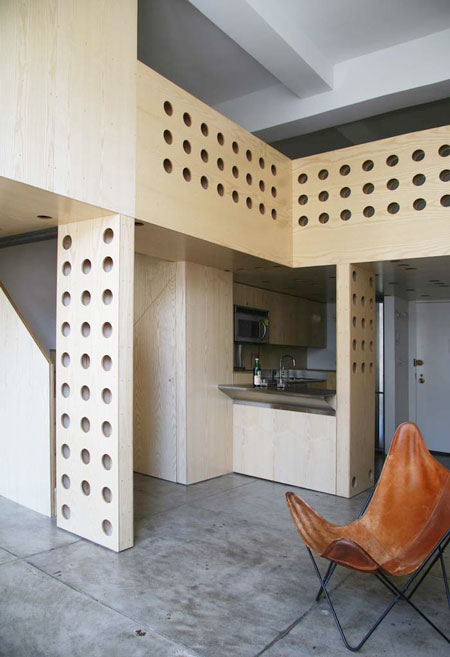
The modular concept is a "furniture-based interior construction system" intended for dwellings in major cities where often the high living cost is not reflected in the small living space.
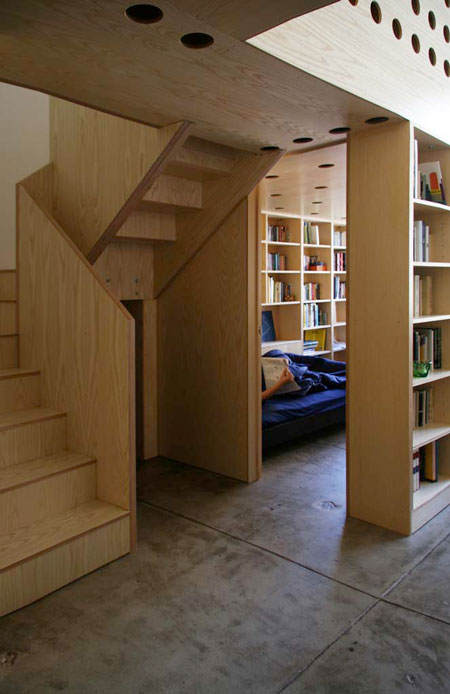
The system comprises hollow wooden panels and cabinet units made of half-inch, ash plywood. The two examples shown here were completed in September 2007.
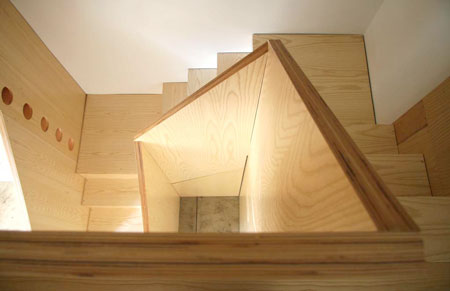
The components can be assembled to define a space either horizontally or vertically depending on the interior space available.
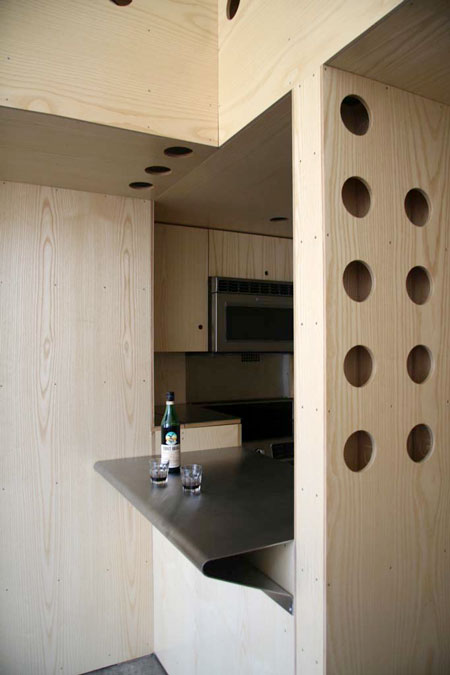
Vertical structures are used to partition areas and by staggering horizontal panels (for reinforcement), mezzanine floors with spans of up to 20 feet can be created.
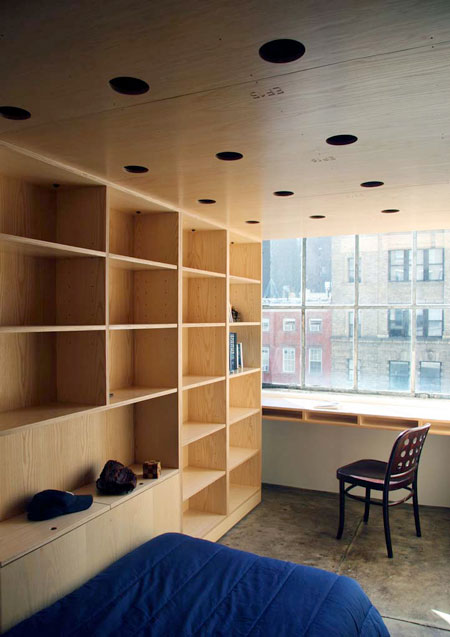
The panels have been designed with a maximum size of 2x8 feet to allow them to comfortably fit through doors, lifts and up stairwells.
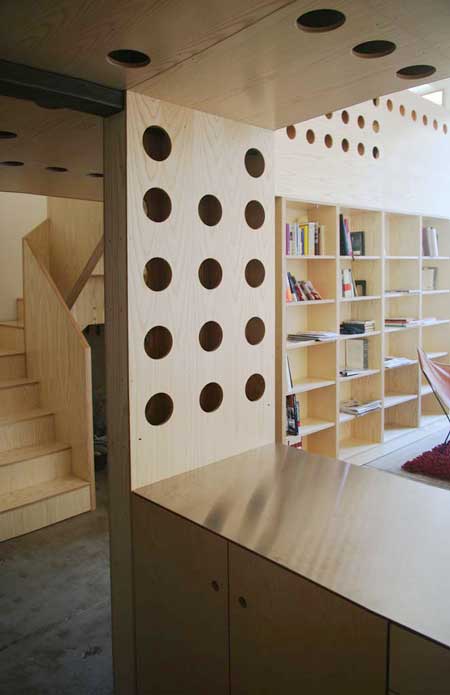
The system is manufactured off site by CNC technology and is dry assembled on site using semi-hidden fasteners.
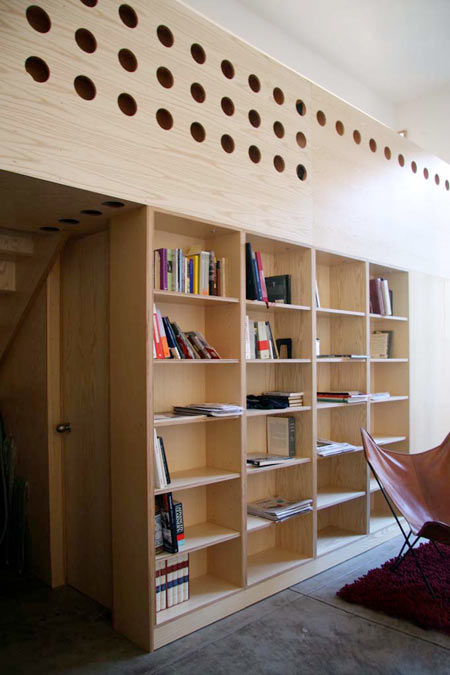
Here are more details from ORBA Architects:
--
URBIA Furniture System for Small Apartments in Big Cities
Over the past few years the technological developments related to digital fabrication have became a sort of David’s sling in the design process, significantly expanding the range of what can be done with limits of time, resources or even budgets. Opening up a new way of thinking about manufacturing and assembling, they have fused into the development of design work fostering the emergence of new ways of expression by imposing limitations and affording freedoms at the same time.
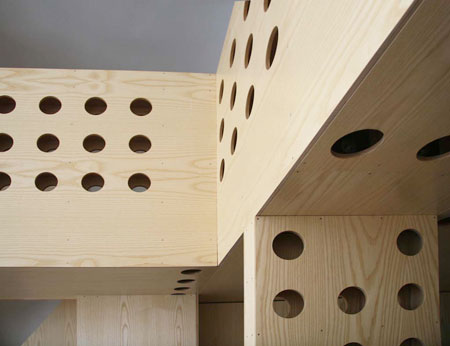
The URBIA system of furniture expansion for small apartments in big cities re-evaluates the age-old problem of trying to make the most with the least, while imagining what an urban existence of minimal materiality would feel like while affording also the possibility of “disassembling your house and taking it with you.” The concept is a furniture-based interior construction system that defines an architectural environment.
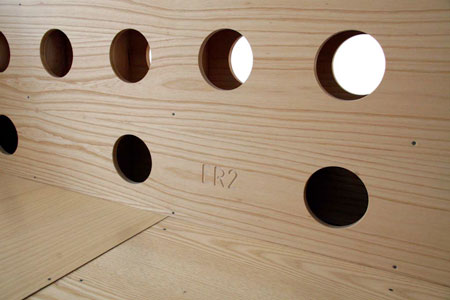
There are in all big cities, some neighborhoods that attract with the irresistible promise of a life of urban loafing, suggesting to our fancy perpetual pedestrian investigations and as little time spent at home as possible. Familiar to flanêurs of Tokyo, Paris, New York or Buenos Aires, these neighborhoods are often characterized by the large amounts of typical rents and the rather small size of available apartments.
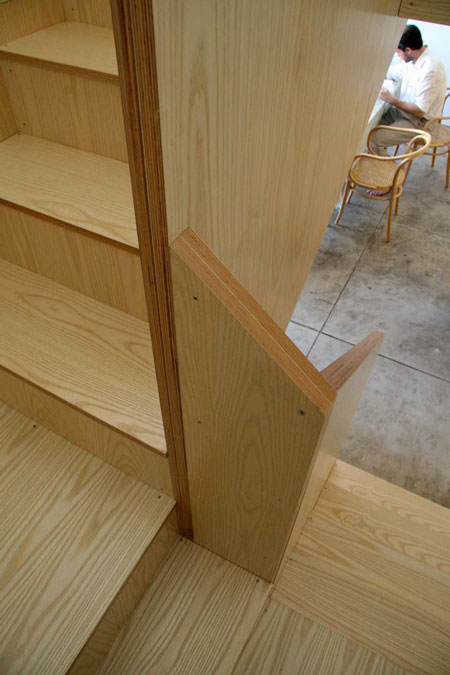
Those addicted to this kind of urban lifestyle are nomads at heart who must constantly drift between plazas, boulevards and cafés often only returning home in an inevitable concession to sleep and clean laundry. For them, home does not need to be large, since the pleasures of the city are intrinsically incompatible with the commitments to tend to large property or manage an abundance of personal possessions.
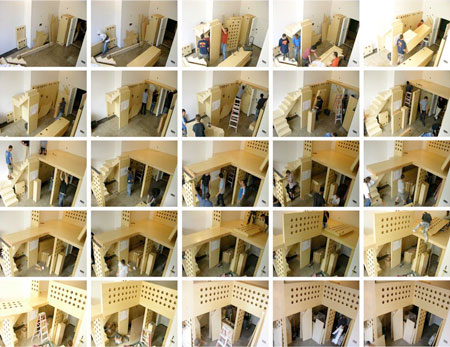
Our Furniture Expansion System for Small Apartments in Big Cities, is designed for such lifestyles of minimal materiality—even if it is lopsided since these types tend to accumulate large book or shoe collections, vices that one day suddenly surprise with unexpected demands for additional room.
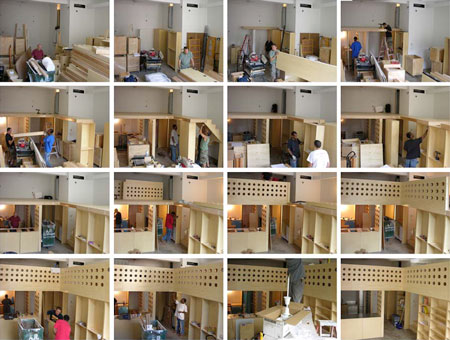
The System is composed of hollow wood panels and cabinet units that can partition a space vertically or horizontally depending on the potential of the existing interior. These units are designed for maximum structural performance, minimum weight and ease of installation, relying on hollow 1/2” ash plywood construction and a maximum size of 2x8 feet that fits through doors and onto elevator cabs. The system can be deployed vertically to define partitions or horizontally to create loft floors by staggering the 8-foot panels to reinforce each other to a span of up to 20 feet.
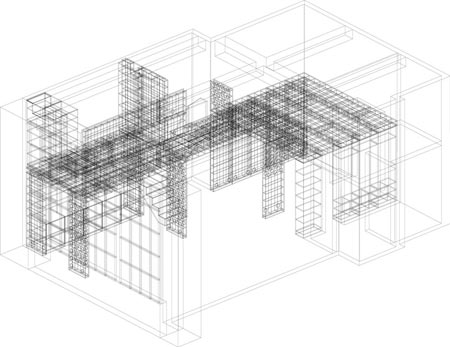
It is manufactured off-site utilizing CNC technology and requires only dry assembly for its site installation. It allows maximum use of minimum space with the possibility of endless reconfiguration and the potential of taking the rooms with you when moving out. The panel construction relies on the use of semi-concealed fasteners, which punctuate the surfaces with access openings that characterize the walls and floors with an “unintentional” ornamentation that is derived from the necessities of its assembly.
The two prototype installations of the URBIA system were completed in September 2007 in neighboring units on one apartment floor in New York City: URBIA Prototype 2G and URBIA Prototype 2E.
What makes it different or better? (beauty almost automatic)
Fabricated in the controlled environment of the shop, the URBIA system provides quality of detailing, economy of construction, speed of assembly and flexibility of configuration, but most importantly it embodies the possibility of a form of higher luxury potentially accessible to all. In today’s urban housing market mostly universally characterized by unimaginative and ill-conceived spaces dressed-up as luxurious by the inclusion of a few expensive materials, URBIA proposes a luxury of conception implicit in the harmony of its modular coordination. The proposed system is open-ended in nature, allowing for site modifications and the addition of custom elements that can give specificity to the whole, but it also provides, unlike traditional sheet-rock based interior construction, a built-in rhythm of articulation based on a Fibonacci series that makes proportional mistakes difficult and beauty almost automatic.
Location: New York, New York
Program: Residential interior, prefabricated modular interior architecture system.
Area: Prototype unit size = 600 – 800 sf
Status: Completed September 2007
Awards: ID Annual Design Review Award 2008
Credits: OBRA Architects + site assembly. Robert Silman Associates, structural.